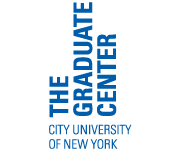Academic Activism Through Art: Highlighting Student Experiences in the Classroom
One of the goals of Pedagogy Day’s 2020 conference is to increase awareness of experiences of oppressed students in the classroom, therefore, we asked for student submissions that highlight the ways in which systemic and institutional oppression impacts students’ lived experience in the classroom. Students responded to the prompt “What my professor needs to understand.” Instructors may wish to bring these pieces into the classroom (please acknowledge the student artist) to open and facilitate discussions.
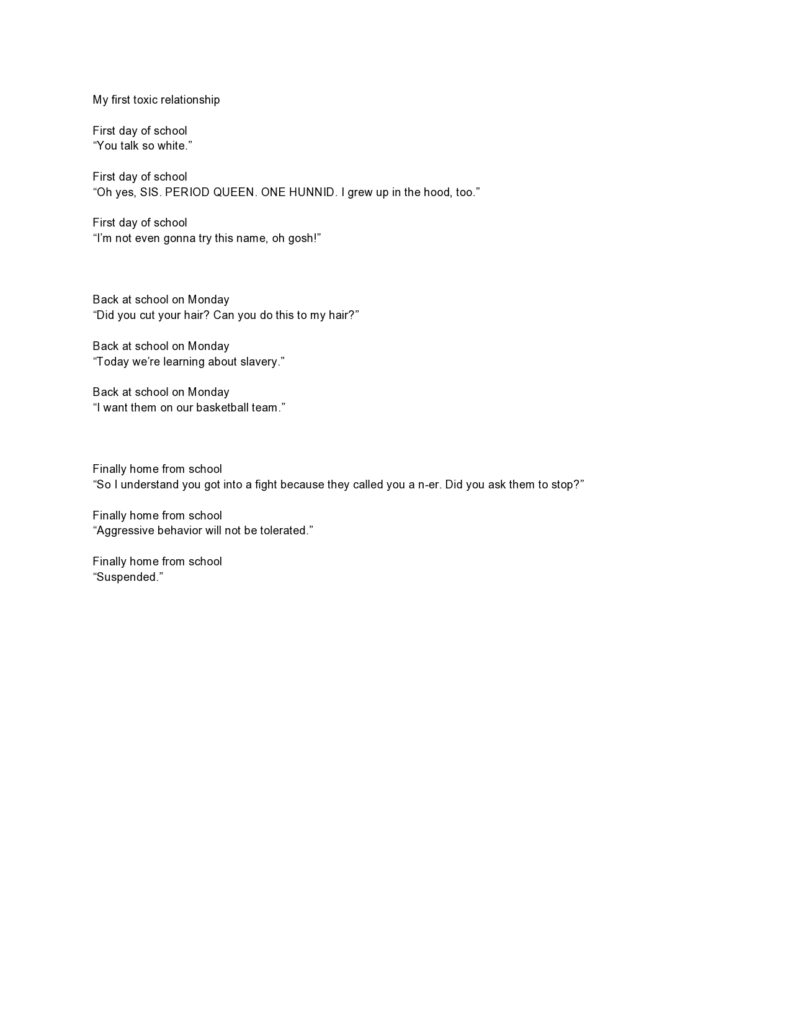
My first toxic relationship
by
Bre Bethea
The first time I experienced microaggression was in the education system as a little girl. Little did I know it would follow me. I have yet to find the courage to break up.
HEAR ME OUT!
by
Yasmin Parris
Marce Ventura
Emily Velasco
Bin Qing Zheng
Rachel Rosado
Flor Barajas
This video briefly showcases the results on a research conducted by students at John Jay College of Criminal Justice. It explains how being voiceless is a feeling caused by microaggressions from professors during a class setting.
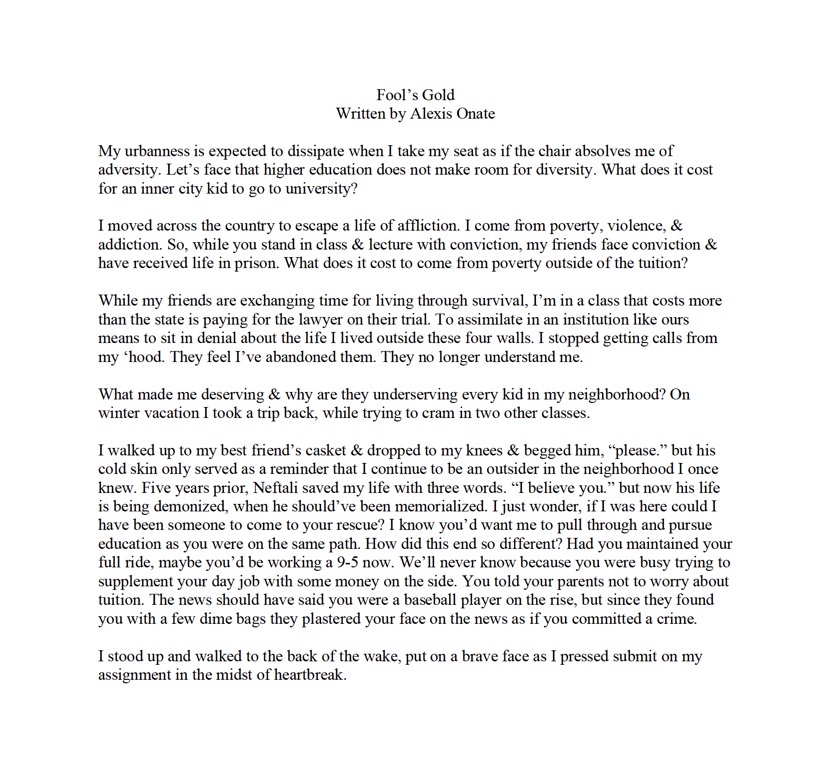
Fool’s Gold
by
Alexis Onate
Striving for inclusion and education in a neighborhood where those worlds don’t intersect.
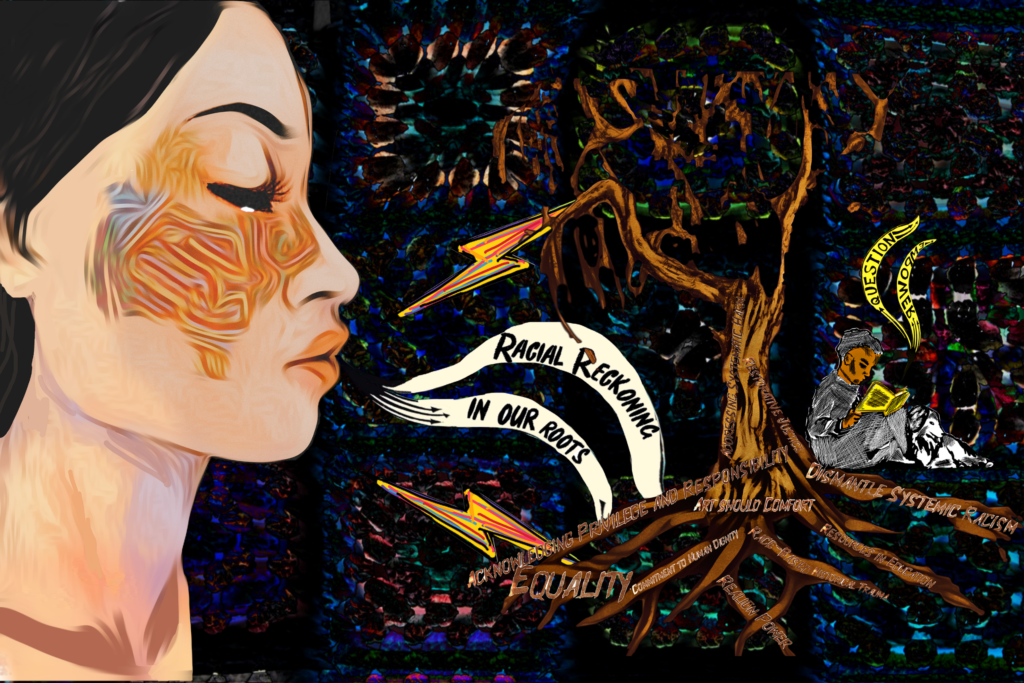
Racial Reckoning in Our Roots
by Melissa Ceren
To represent the core ideals of social justice, the narratives and identities of the marginalized must be acknowledged front and center. The key for understanding social movements intersect a social identity and political perspective. In this visual art composition, the Willow tree depicts death; its branches are without leaves and the roots remain without growth. This represents the end of old ideals; the era of thriving racism, classism, inequality, and gender discrimination comes to an end with new generations from social conscious perspective. The roots of the tree display the various injustices and methods of reform. The emphasis on rehabilitation and education remain among the top priorities in regards to reform for a better future. The young child illustrates the generations of millennials and generation Z, who continue to recognize notions of structural, educational, and community violence. These generations are willing to fight the old cycles of hatred and oppression which plagued the United States for centuries if it means the promise of a better future. The scars on the girl represents the generational trauma in which millennials and generation Z endure. Taking action against injustice and oppression helps plant new roots towards recognizing and ending classist, racist, gender based, LGBTQ+, and all other forms of inequity. From an education perspective, new teaching methods, such as an emphasis on creative expression, learning accurate American history, understanding climate change, and taking out less focus on standardized testing, should be implemented in our education to co-construct knowledge in participatory action research to help better understand and change controversial issues in a macro level perspective. Education is key when it comes to understanding why the world is the way it is, and how we as a society should change to make this world a better place. Therefore, by uprooting these poisons in American society, we create a new path towards a better, safer, more stable environment for Black, Indigenous, and other people of color.
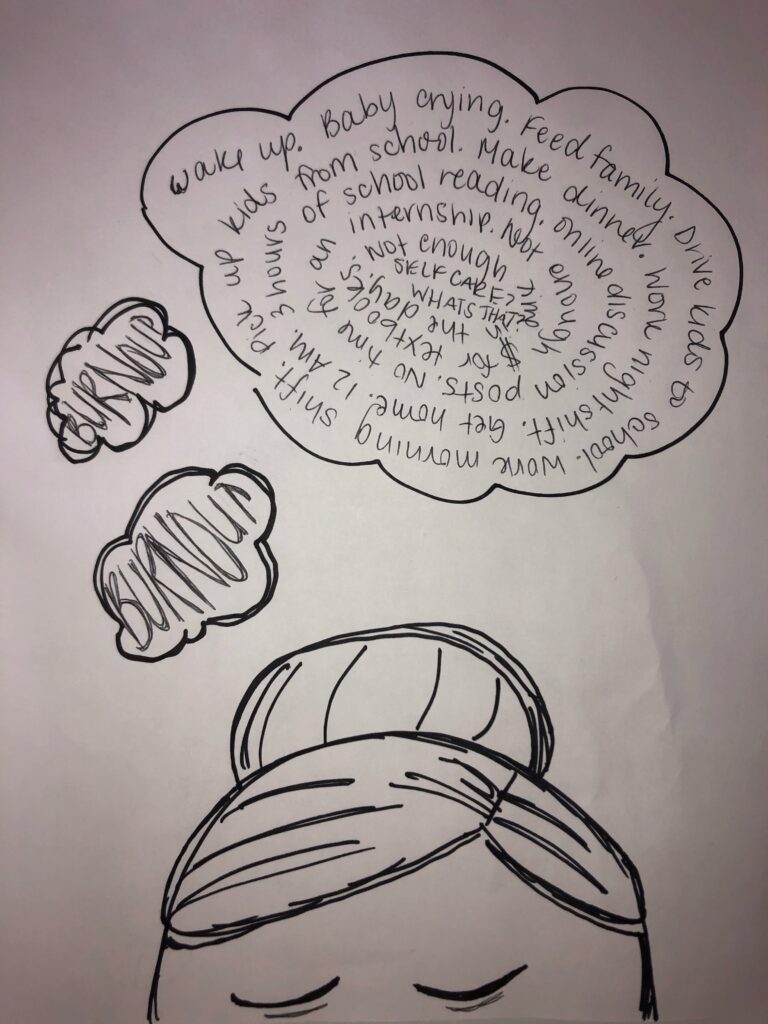
What my professor needs to understand
by
Victoria Baquet
College students, specifically graduate students, can have a hard time finding the balance with their extreme schedules. Most grad students have full-time jobs, some are parents, research assistants, are trying to bulk up their resumes with internships, etc. While focusing on our academics is a priority; it’s hard to put full concentration into online learning while worrying about bills, family responsibilities, and more. Self-care seems almost impossible. What most professors need to understand is that students have many responsibilities and priorities. These stressors significantly increase the risk of burnout. It is essential to take the time to understand and empathize with student’s hectic lives in and outside the classroom.
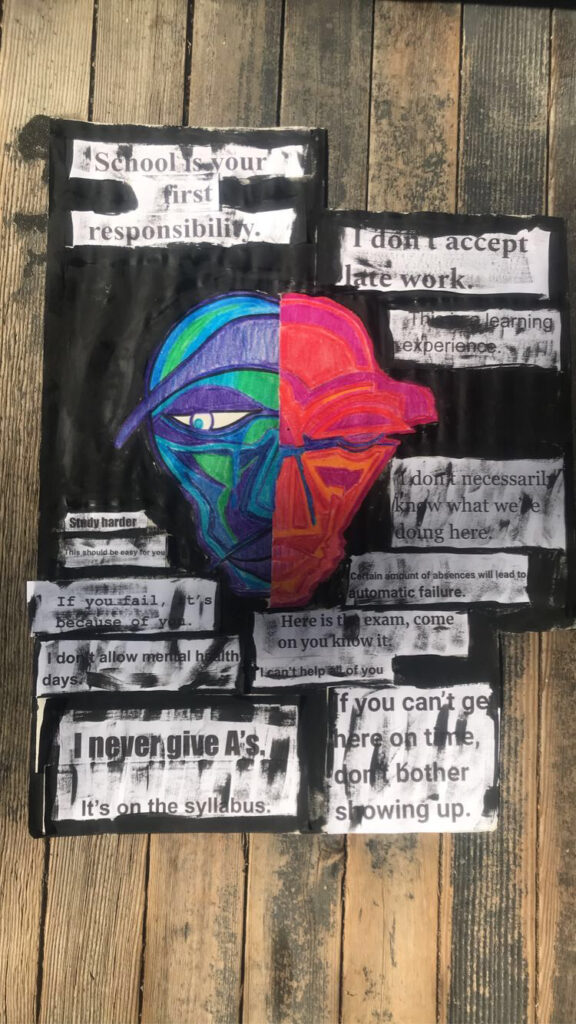
Expectations
by Chris Jordan
The piece shows two faces. Both show how I feel while being a student during the pandemic. I’m given expectations, assignments, and no genuine support. There is no established welcoming to my courses, as I struggle to find proper rest as I am an essential worker in two occupations. I am both frustrated ( red face) and sad ( blue face). The blackness around the face resembles the abandonment I feel every day, as the campus is distant and makes me unable to feel part of it. The phrases consist of my schooling experience and all the things professors have said to me in the past and current semesters. I smudged black paint on the phrases as I feel consumed by them. Expectations is kindly asking of instructors to reconsider what they might say and do, for actions have reactions that proceed beyond the desired interpretation an instructor may have. I wish this piece can make educators re-evaluate the privileges given to them simply to instruct, while some students like myself work 50+ hours a week to live. Expectations is a piece that indicates a flaw in the relationship between educator and student.
Un-I-ted by Marcela I. Jorge
The education system has been created around the Anglo-American, their history and their views. This needs to change since the United States is more than just the Anglo-American. The United States is a diverse country, each day becoming more and more diverse. As a country we have to stop teaching others that we are the center of the universe and start acknowledging diversity. Multicultural education allows inclusion and it should be looked into.
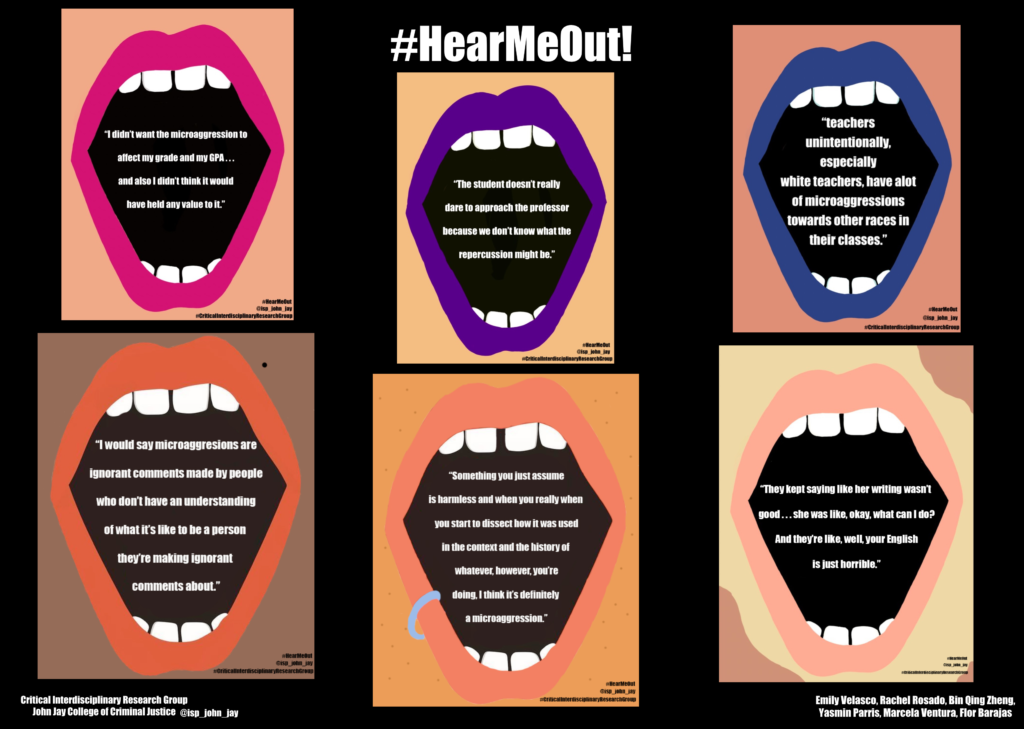
Hear Me Out!
by Emily Velasco, Rachel Rosado, Bin Qing Zheng, Yasmin Parris, Marcela Ventura, Flor Barajas
We have created a series of posters showcasing student’s experiences of microaggressions in the John Jay classroom. The posters focus on how professor’s actions have a profound effect on their students.
